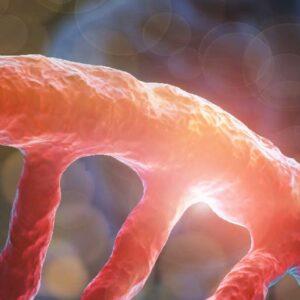Scientific Background
Familial hypobetalipoproteinemia (FHBL) is a heterogeneous group of codominantly inherited conditions of apolipoprotein B-containing lipoprotein. Apo B, as the most important component of LDL and VLDL, plays an important role in the hepatic synthesis ("assembly") of VLDL and, as a ligand for the APO B/E or LDL receptor, for the reuptake of LDL by the liver. Due to the different characteristics of the modified, mostly truncated Apo B polypeptides, the clinical phenotype is highly variable and in rare cases may resemble abetalipoproteinemia (null allele variants of the APOB gene). Genetically, pathogenic variants in the APOB gene lead to FHBL in about 50% of patients. Furthermore, variants in the PCSK9 and ANGPTL3 genes are causative for FHBL. The clinical result is a risk factor for hepatic steatosis. Heterozygous carriers of a variant for FHBL can be asymptomatic but can also develop fatty liver disease and fat malabsorption. Secondary, non-familial forms of FHBL include strict vegan diet, malnutrition, malignancies and chronic liver disease.
Familial hypobetalipoproteinemia type 1 (FHBL1) is often caused by heterozygous truncating variants in the APOB gene and is not associated with liver or peripheral insulin resistance. The hepatic secretion rate of Apo B-containing lipoproteins correlates with the length of the shortened polypeptides. The truncated apoB molecules are generally non-functional and degrade rapidly, resulting in significantly reduced plasma levels of apoB (<5 percentiles) and LDL cholesterol (typically between 20-50 mg/dl). Although a wild type allele is present in heterozygous APOB variants, the apoB plasma level is only 24% rather than the expected 50%. The prevalence is between 1:1,000 and 1:3,000. Carriers of one variant (prevalence approximately 1:3,000) show hardly any clinical abnormalities except for moderately reduced serum cholesterol or triglyceride concentrations and weakened tendon reflexes. Only conditions that are associated with noticeable neurological conditions require treatment. In these cases, the abetalipoproteinemia is treated by diet and vitamins A and E. Carriers of one variant are more likely to have a lower coronary risk than the general population due to reduced LDL and VLDL levels.
Homozygous hypobetalipoproteinemia (HHBL) is very rare (prevalence <1:1,000,000) and it cannot be distinguished clinically from abetalipoproteinemia (ABL). Patients with HHBL carry homozygous or combined heterozygous variants in apolipoprotein B.
PCSK9-associated FHBL occurs with a prevalence of less than about 1:100,000 and is caused by heterozygous pathogenic loss-of-function (LOF) variants in the PCSK9 gene. Proprotein convertase subtilisin/kexin type 9 (pcsk9) acts as a central regulator of LDL receptor (ldlr) particles and LDL cholesterol concentration in the plasma. It regulates the number of ldlr present on the surface of hepatocytes and therefore the amount of LDL cholesterol (LDL-C) in the blood. Pcsk9 binds to the ldlr and LDL-C complex. The resulting pcsk9/ldlr/LDL-C complex is taken up into the cell in endosomes and degraded again in the lysosomes. When there is a low number or absence of pcsk9 molecules, such as caused by LOF variants in the PCSK9 gene, the ldlr molecules are not degraded and can be recycled to the cell surface after they have released the LDL particles to the lysosomes. This results in a high concentration of LDL receptors on the cell surface and a (significantly) lower level of LDL-C. In contrast, PCSK9-associated hypercholesterolemia is caused by pathogenic gain-of-function (GOF) variants in the PCSK9 gene. This leads to an excessive breakdown of ldlr molecules and thus to (significantly) increased LDL cholesterol levels. See familial hypercholesterolemia for more information.
Familial combined hypolipidemia (FCHL)/familial hypobetalipoproteinemia type 2 (FHBL2) is caused by homozygous or combined heterozygous loss-of-function variants in the ANGPTL3 gene. Angptl3 inhibits various lipases such as lipoprotein lipase (LPL) or endothelial lipase. Loss-of-function variants abolish lipase inhibition, resulting in the more efficient metabolism of VLDL and HDL particles. This manifests clinically as panhypolipidemia. Compared to non-carriers, carriers of homozygous variants or combined heterozygous variants in the ANGPTL3 gene show reduced amounts of all plasma lipoproteins and apolipoproteins. The lipid profile shows low levels of apoB, total cholesterol and LDL cholesterol in FHBL1, as well as low levels of HDL cholesterol.
References
Rimbert et al. 2015, Atherosclerosis 250:52 / Burnett et al. 2012, Eur J Hum Genet 20 / Martin‑Campos et. al. 2012, Clin Chim Acta 413:552 / Tarugi et Averna 2011, Adv Clin Chem 54:81 / Kane et Havel, in Scriver CR et al. 2001 (eds): The Metabolic and Molecular Bases of Inherited Disease, 8th Ed. Chapter 115 / Fasano et al. 2007, Arterioscler Thromb Vasc Biol 27:677





















